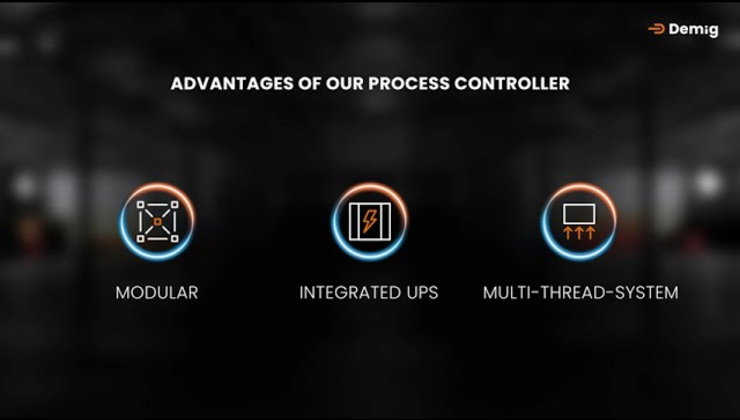Heat is required for a wide range of applications. Hot air blowers pre-temper frozen goods in the food industry. Drying systems are used in many industries, and are an important component of consistent product quality. Varnishing furnishes reduce the drying times of surface coatings. Finally, high-temperature processes in annealing furnaces change material properties, from metals to ceramics.
All of these processes have one thing in common: they are sensitive to faults. Because of this, a process control system for these applications cannot just stubbornly follow a program, as is the case for CNC machining systems, for instance.
A process controller for heat treatment processes needs to be able to take a large number of parameters into account. Temperature, time, wall thickness, and material are just four examples. Insufficient tempering can result in poorer quality, as can excessive heat or too much exposure time. In the past, a specialist technician was needed on the system to manually monitor the process controller. Now, the process control system from Demig allows the system to run with the minimum number of specialist personnel.
The key to successful, automated in-process controlling is a process control system that grows with you. We offer in-process controlling that is not only freely configurable, but also adaptive. As the number of parameters, combinations, and applications grows, the process controller offers ever more customised suggestions for each new task.
Demig process controllers are sustainable in the best sense of the word: Their extremely long service life and repair capability differentiate them clearly from the competition. Demig ensures extreme compatibility with previous models from the earliest stages of development, so process controllers can usually be replaced without significant revisions of your switch cabinet or control technology.
Adaptability and high compatibility shorten the test phase, delivering consistently good results more quickly. The best thing about adaptive in-process controlling is how easy it is to operate, along with the reliable processes it delivers. Thanks to this combination, the process control system remains ready to automate complex processes with minimum manpower. This significantly reduces the operating costs of the system, and thereby the life-cycle cost (LCC) and total cost of ownership (TCO).






